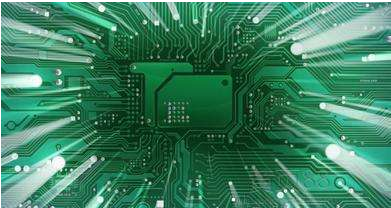Metal thickness test in PCB design.
There are two ways to measure the coating thickness of circuit patterns and through holes:
1: Lossless method-3 backscattering method;
2: The destructive method is the one-microsecond method or the cross-section method.
1: Non-destructive method.
The most commonly used non-destructive method for testing PCB coatings is the β backscatter method, which is a particularly useful method for measuring coatings during electroplating of conductive patterns and through holes, and after electroplating and before the beginning of the etching operation. thickness of. This method uses a radioisotope mounted on a suitable detector to emit self-radiation. The detector consists of a self-radiation excavator and a receiver. Put the detector on the metal coating that needs to detect the thickness of the surface. A part of the beta rays emitted by the detector hit the metal surface and reflect the intensity of the rays reflected by the beta as the thickness of the metal coating increases. Using the appropriate standard scale, the β-ray electronic counter can directly give the coating thickness in microns.

This instrument only gives the average thickness of the coating, and is mainly used to measure the thickness of the gold, tin and tin-lead alloy coating on the copper foil, the thickness of the copper layer on the epoxy resin and the thickness of the coating. Light inhibitor on copper foil. Testing the thickness of a wide range of coatings requires multiple alternate testing of beta-ray particles. This technology is a fast, accurate and non-destructive coating thickness measurement method, so it is widely used in the quality control field of printed circuit board manufacturing and can be operated by unskilled operators.
2: Destructive method.
The most commonly used destructive detection technique is to directly measure the thickness of metal coating microsections, including the preparation of metallographic samples and inspection under a microscope.
Cut the metal plate printed circuit board vertically or horizontally, observe the visible layer structure under a microscope and take pictures, so that the conductive pattern and the thickness change of the through-hole wall coating can be determined. The circuit board is usually cut horizontally with a diamond circular saw, and then polished with diamond mortar or sandpaper using a grinding wheel polishing machine. Place the air-dried sample under a microscope at 30 to 1000 times, observe and photograph three different positions of the perforated wall, and usually report the average value. This microsectioning technique for thin coatings may cause large errors, for example, for l? For n-thick coatings, the error may be as high as 50%, but for thicker coatings, for 5 sm thick coatings, the error will be greatly reduced, the error is only 2%.
The advantage of this technology is that it can be applied to coatings of various shapes including through-hole coatings. Other information can also be easily obtained, such as the number and type of coatings, uniformity, perforation and undercutting of conductors, but this method is time-consuming and requires skilled operators to operate.
3: PCB perforation test.
Porosity testing is used to detect coating inconsistencies, such as cracks on dredging and electroplating surfaces. This test is particularly important for gold fingers, because the corrosion of base metals through the perforation of the coating will adversely affect the surface electrical contact performance of the gold fingers. Therefore, dredge and cracks are the main test objects for precious metal coatings.
A variety of PCB technologies can be used to detect the holes in the coating. The most commonly used are electrical recording tests and some gaseous reagent dredging tests. The gas reagent test requires that the electroplated printed circuit board be exposed to sulfur dioxide within 24 hours. Put the sample in a closed container with a capacity of 101, add 0.5cm3 of water and 100cm3 of gaseous sulfur dioxide into the container, open the container after 24h, inject 100cm3 of hydrogen sulfide into it, and then close the container. If the PCB coating is porous, its base metal will be corroded and can be observed with the naked eye or a microscope. This PCB hole test is most commonly used to test gold, lead metal and tin-nickel alloy coatings on copper and its alloy substrates.